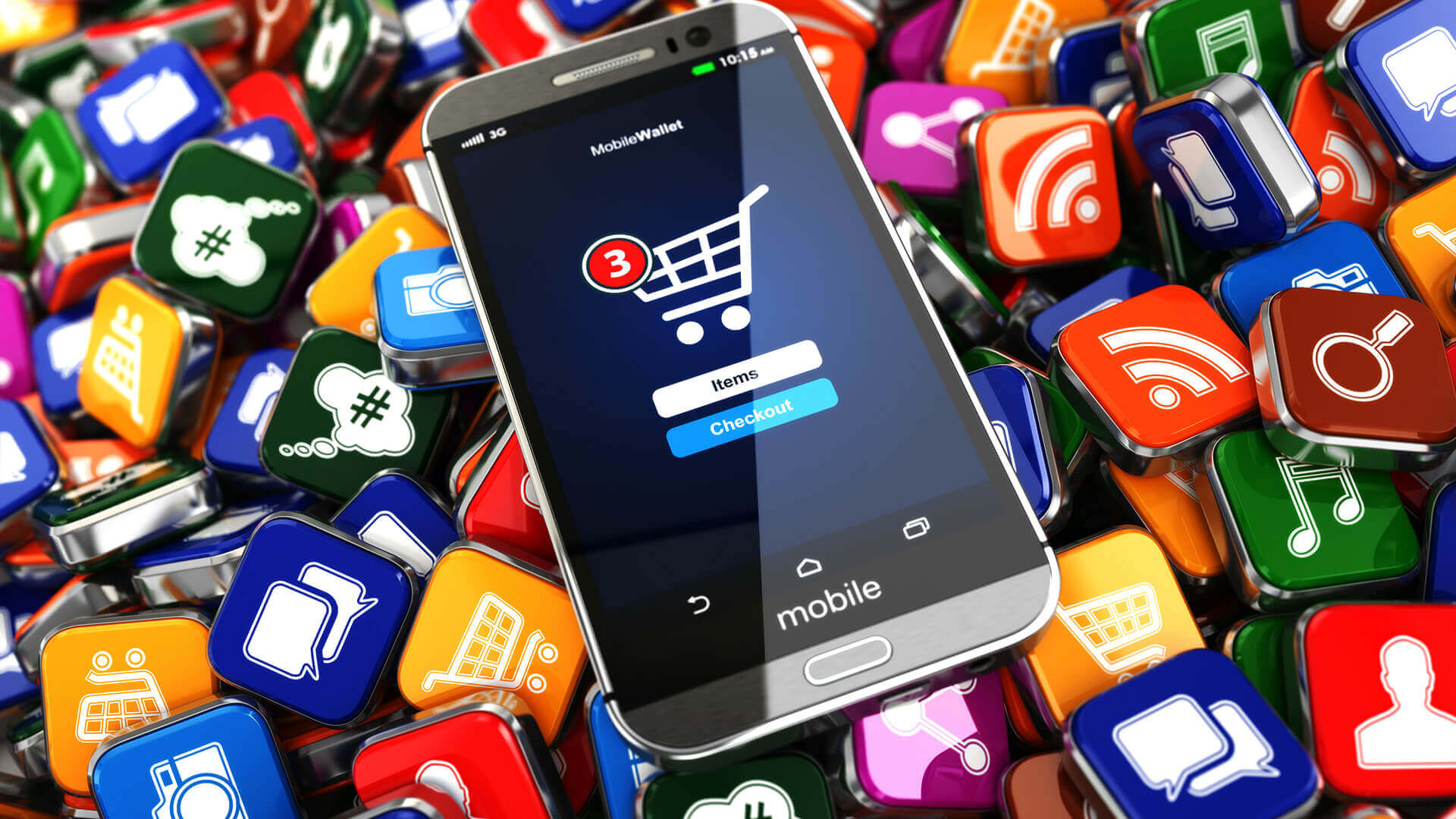E-commerce activity has grown substantially over the past two years. While online shopping was already primed for healthy growth over the next decade, the COVID-19 pandemic accelerated any past projections.
Globally, e-commerce sales saw a 27.6% growth rate throughout 2021. With these growth numbers, Insider Intelligence expects that the worldwide e-commerce market will reach $5 trillion in 2022, and $6 trillion will be hit only two years later in 2024. This is largely fuelled by the fact that online sales continue to grow.
Even as stores reopen, the percentage of customers that opt to shop online is getting larger. Many industry leaders assume that these online shopping habits are here to stay, especially given the projected growth in online sales year over year.
The impact of accelerated e-commerce growth on retailers
In our always-on, buy anything anywhere world, customers want their shopping experiences to be personalized, dynamic, and convenient. As a result, many businesses are trying to reinvent themselves, adapt to new business models and technologies, adhere to new consumer expectations and keep pace with their competitors.
Given that retailers have had to pivot their business models to online (if they weren’t there already), the competitive landscape has become even more difficult to navigate. There has also been a notable “death” of brand loyalty amongst consumers due to market fragmentation, and the ease with which consumers can switch and find brand alternatives if they are dissatisfied. As such, retailers are facing a challenge in their efforts to differentiate themselves and stay competitive in a tough market.
Trends and challenges shaping the e-commerce industry in 2022
The growth across e-commerce sectors
As many e-commerce businesses experienced firsthand, COVID-19 caused a boom in online shopping. What was already a high-growth industry was catapulted into hyperspeed as the world adapted to changing regulations, societal norms, and customer needs. While the rapid growth across global e-commerce markets and e-commerce categories is projected to eventually even out to pre-pandemic numbers, that time is still far off. For 2022 and into the next two to three years, we will continue to see large upticks in e-commerce growth worldwide.
E-commerce marketing trends
1. The rise in importance of zero- and first-party data:
- Data is used to make decisions and help companies reach their goals—but how data will be collected in 2022 is drastically different from how it was collected before. The rising importance of zero- and first-party data has changed the way e-commerce businesses will collect information from consumers.
- With customers becoming aware of how much data they’re giving up to businesses every day, and with the dramatic change to data privacy initiated by the likes of Apple and Facebook, Data collection is becoming more and more challenging.
- For online businesses, third-party data has been a critical component of marketing data strategy in recent years. Now, marketers will be forced to rely on zero- and first-party data.
Why we care. E-commerce companies will need to prioritize the collection of zero- and first-party data in order to sustain the marketing efforts needed to succeed. It will also require marketers to shift and look at metrics differently than before.
2. Personalization in a cookieless world:
- As regulations make data tracking harder, consumers will continue to demand data privacy AND highly personalized brand experiences. E-commerce businesses need to determine how they will continue to collect the necessary consumer data to foster these personalized brand experiences.
- The most important thing for brands to understand is that the way consumers perceive specific data interactions is heavily dependent on their relationship with the brand. What does that mean? Consumers will be willing to exchange their information with brands if they know it will be used to deliver relevant content and a personalized customer experience. It all comes back to prioritizing customer trust above all else.
Why we care. Brands must be transparent about their data collection efforts and show that there is shared value in the data exchange to stay afloat in the cookieless world.
3. Social commerce:
- E-commerce activity is migrating to social media platforms, from brand marketing to customer service to shoppable advertising.
- After more than a year of working from home, people around the globe are spending even more time scrolling through social feeds. The typical social media user now spends about 15% of their waking life using social platforms.
- Sales through social media channels around the world are expected to nearly triple by 2025.
Why we care. Social media platforms are presenting new ways for e-commerce businesses to engage with customers and create unique experiences. If they haven’t already, e-commerce businesses need to get a grasp on social commerce and how to integrate this touchpoint into their overall strategy.
4. Data reporting tools:
- E-commerce companies are spending a countless amount of time analyzing data. Tracking everything from online store performance to return-on-ad-spend requires various tools to collect and analyze various metrics that matter to an e-commerce company’s business performance.
- Today, e-commerce businesses have access to a large amount of data reporting tools and software to analyze their digital performance. While having so many options can seem like a positive thing for businesses, the reality is that most tools available only have selective reporting capacities. Without a reporting tool that has the capacity to pull all information into one central space, it is impossible to gain one single source of truth to make accurate conclusions and optimizations.
Why we care. Data reporting software/partners that centralize all metrics from all tools into one place will simplify the data analytics process, yield more accurate insights, and help e-commerce companies make better, more informed decisions.
5. Delivery expectations
As online shopping activity continues to increase, consumers’ preferences and expectations for delivery have also increased. Free delivery is becoming expected and waiting any longer than two days for delivery can be a deal-breaker for most consumers. Some must-haves for today’s online shipping experience include:
- Speed.
- Low-to-no cost returns.
- Painless returns.
- Transparency and flexibility in the shipping process.
Why we care. Consumers are evolving right before retailers’ eyes. Understanding their behaviors and expectations and being nimble enough and committed enough to address and delight them in a timely fashion will be the differentiator online retailers need to stand out in the years to come.
As consumer expectations for shipping become more insatiable, shipping and logistics processes for e-commerce businesses become more complex and expensive. As such, selecting the right shipping platforms and partners is more important than ever for e-commerce businesses.
Get the daily newsletter digital marketers rely on.
Summary: Finding success in this rapidly evolving space
The events of the past few years have changed every part of the e-commerce buying journey, from what consumers expect and how they engage and buy online, to the rising complexities. The path to e-commerce growth means pivoting quickly to meet new customer and societal expectations.
For e-commerce businesses, finding success in 2022 revolves around 3 key areas:
- Striking the right balance when it comes to consumer data collection and personalization in a cookieless world: figuring out a way to make the exchange of zero- and first-party data more valuable to the consumer and worth their while will result in stronger customer relationships and business success.
- Providing a fast, free, seamless, transparent shipping experience sets an e-commerce brand apart from the crowd in the eyes of consumers. Evolving from traditional models, digitizing as many steps as possible, and finding the right delivery ecosystem partners is what companies must focus on.
- Adopting the right kinds of emerging technologies can help e-commerce leaders manage the rapidly evolving world of online retail, ensuring they are showing up in the ways that consumers expect them to and facilitating positive buyer journey touchpoints and experiences throughout.
In the race to offer a more exceptional online experience, striking the right balance between marketing, shipping and logistics, and technologies to provide an exceptional customer experience can feel daunting. Those retailers that figure it out will create a competitive advantage and win the mind- and wallet-share of consumers.
Opinions expressed in this article are those of the guest author and not necessarily MarTech. Staff authors are listed here.

















![How to Use AI For a More Effective Social Media Strategy, According to Ross Simmonds Download Now: The 2024 State of Social Media Trends [Free Report]](https://articles.entireweb.com/wp-content/uploads/2024/04/How-to-Use-AI-For-a-More-Effective-Social-Media.png)
















You must be logged in to post a comment Login